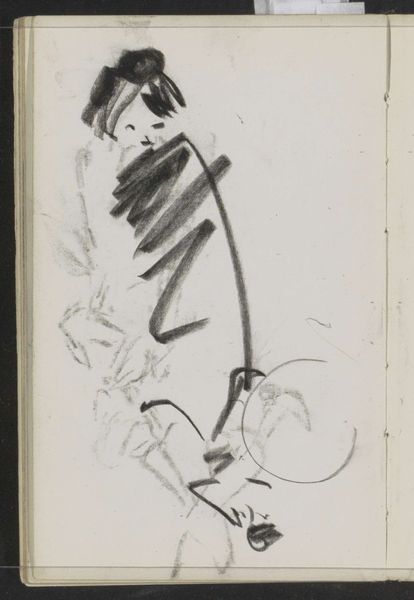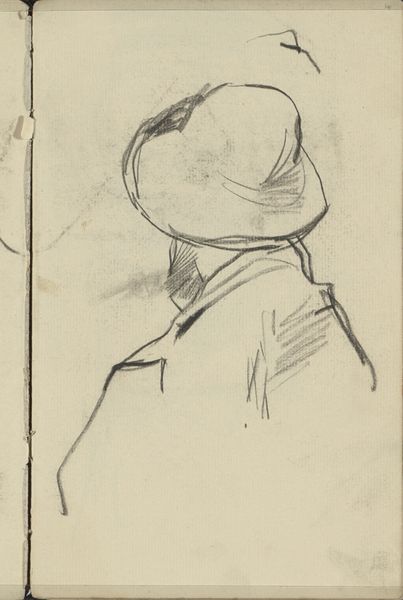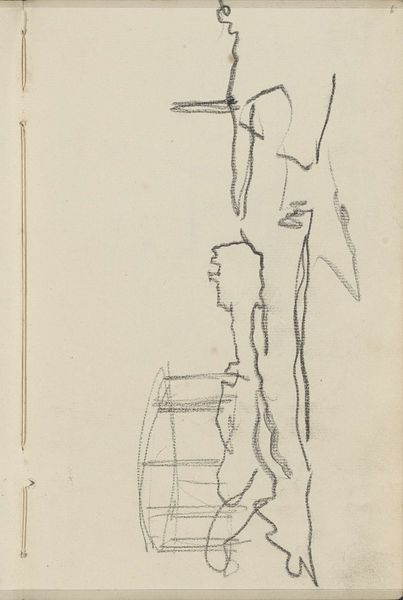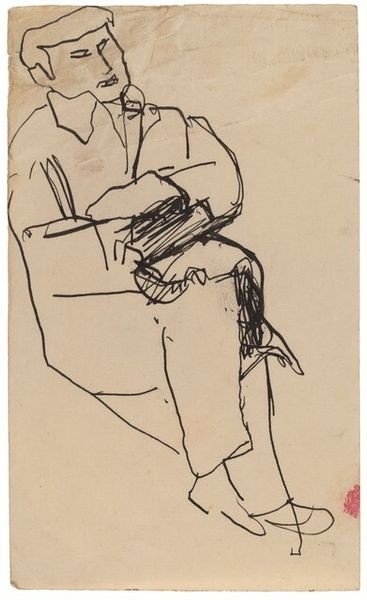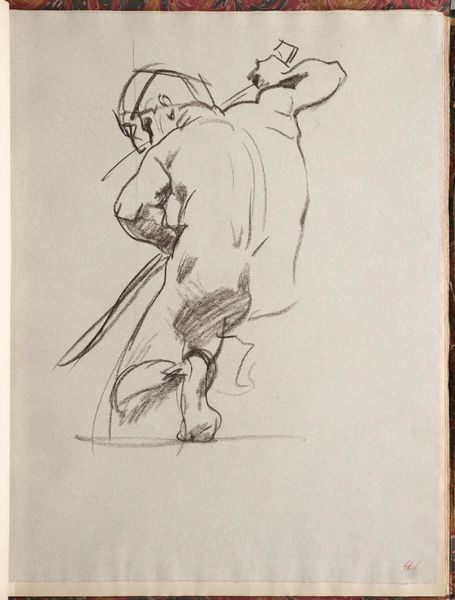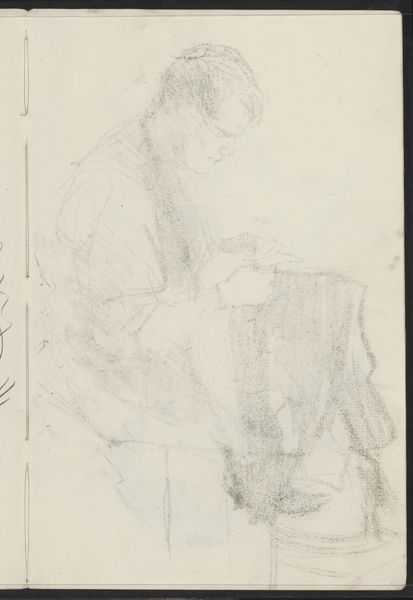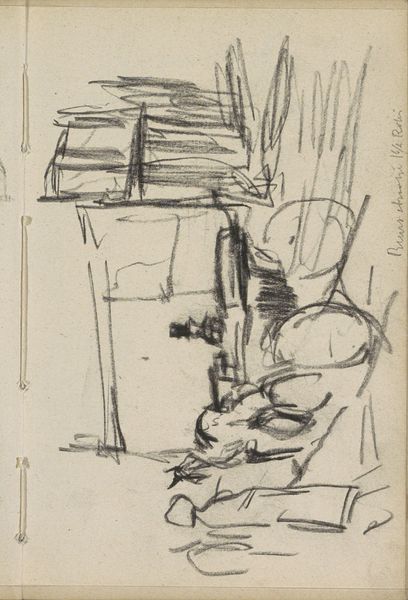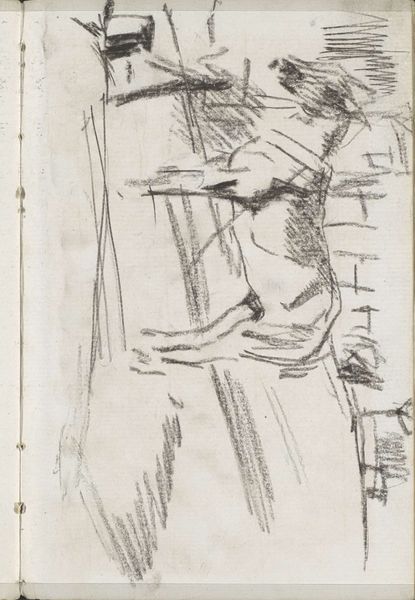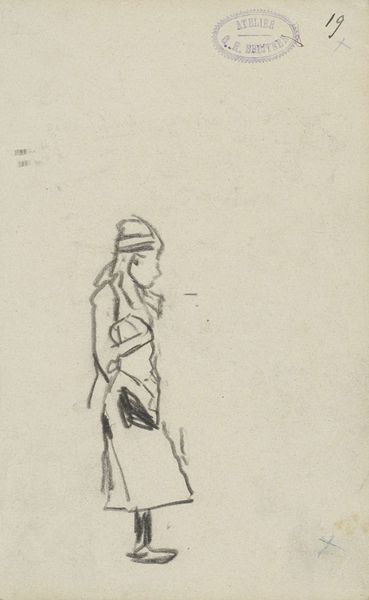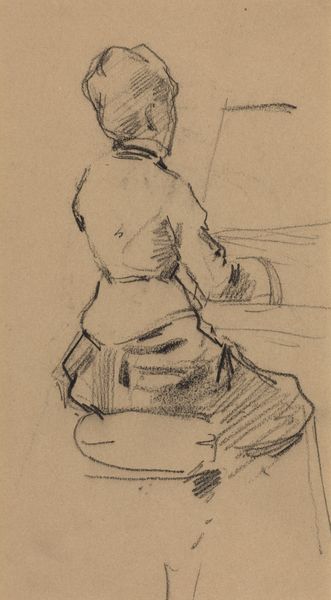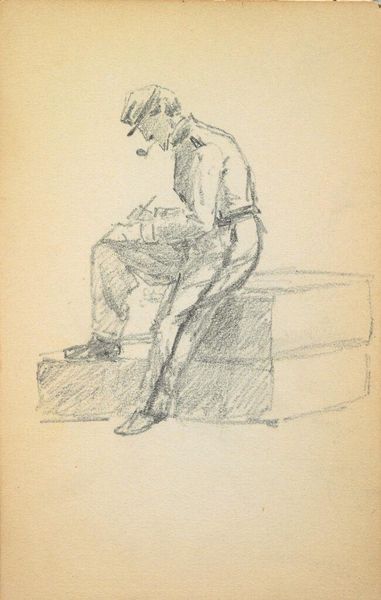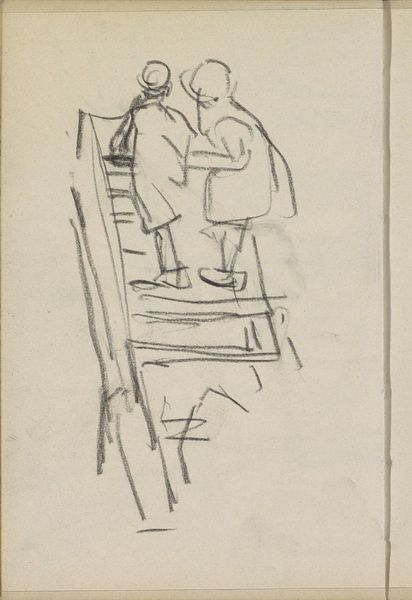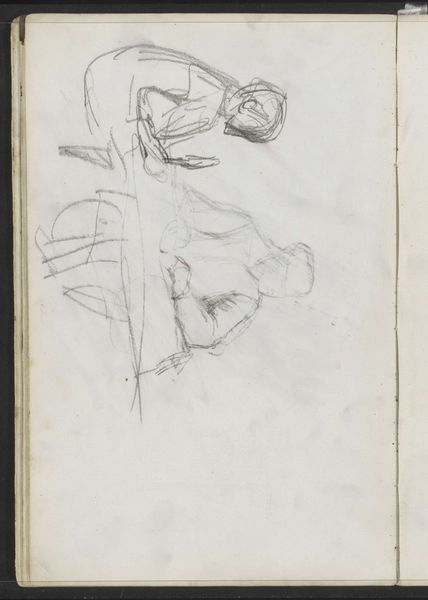
drawing, paper, pencil
#
portrait
#
drawing
#
comic strip sketch
#
imaginative character sketch
#
figuration
#
paper
#
personal sketchbook
#
idea generation sketch
#
sketchwork
#
ink drawing experimentation
#
pencil
#
sketchbook drawing
#
storyboard and sketchbook work
#
sketchbook art
#
initial sketch
Copyright: Rijks Museum: Open Domain
Editor: This is Cornelis Vreedenburgh's "Man in oosters kostuum op een ezel," dating from around 1936. It's a pencil and ink drawing on paper. It feels almost like a quick observation, captured on the go. What's your take on it? Curator: This drawing, though seemingly simple, speaks volumes about representation and the construction of identity. Vreedenburgh's choice to depict a "man in Oriental costume" immediately raises questions. Who is this man, and what does "Oriental" signify in this context, particularly in the 1930s? Is it an ethnographic study, a caricature, or something in between? Editor: So, it's about more than just a man on a donkey? Curator: Precisely. We need to consider the power dynamics inherent in the act of looking, of representing the "Other." What assumptions are embedded in this representation? How does Vreedenburgh's Western gaze shape the image? The term “oosters kostuum” itself is a construction, a broad and somewhat vague label that essentializes diverse cultures and traditions. Is the artist reinforcing stereotypes, or engaging in some form of cultural dialogue? What do you think? Editor: It's fascinating how much can be unpacked from such a simple sketch. I hadn't really considered the implications of the title itself. Curator: Exactly! And it highlights the need to examine art through an intersectional lens, recognizing the interplay of race, identity, and power relations in its creation and interpretation. Editor: I’ll definitely look at sketches differently from now on!
Comments
No comments
Be the first to comment and join the conversation on the ultimate creative platform.
